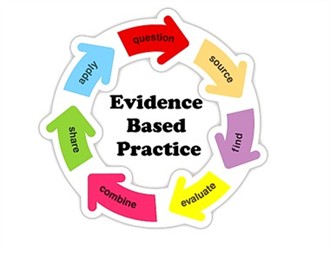Last week we introduced the topic of evidence-based practice. This week we look at how the state of Washington is implementing evidence-based practice that includes IFPS.
In 2012 the Legislature passed E2SHB 2536 with the intent that “prevention and intervention services delivered to children and juveniles in the areas of mental health, child welfare, and juvenile justice be primarily evidence-based and research-based, and it is anticipated that such services will be provided in a manner that is culturally competent.” Washington is one of the few states to have enacted a law for implementation of evidence-based practice. You can view the legislation here:
(PDF, 29Kb) http://apps.leg.wa.gov/documents/billdocs/2011-12/Pdf/Bills/House%20Passed%20Legislature/2536-S2.PL.pdf
Two independent research groups were designated to create an inventory of evidence-based, research-based, and promising practices and services.
One of these research groups, the Washington State Institute for Public Policy (WSIPP), had previously conducted an extensive review of IFPS. WSIPP reviewed all rigorous evaluations of IFPS programs that included a comparison group and then sorted the evaluations based on fidelity to the Homebuilders® model. IFPS programs with high model fidelity had a significant reduction in out-of-home placements of children and produced $2.59 of benefits for each dollar of cost. IFPS programs that did not adhere to the Homebuilders® model produced no significant effects. You can view the full study here:
(PDF, 45Kb) http://www.wsipp.wa.gov/rptfiles/06-02-3901.pdf
Because fidelity of IFPS programs to the Homebuilders® model is key to their effectiveness, it’s important for the IFPS field to be informed of the fidelity measures. The more familiar measures include
- 24/7 availability,
- caseload of 2 families at a time,
- meetings with family 3–5 times a week, and
- services provided for 4 weeks.
Other measures include
- standards for supervisors,
- comprehensive assessment,
- goal setting and service planning,
- engagement and motivation enhancement, and
- cognitive and behavioral approach.
For a complete list of the Homebuilders® fidelity measurs and accompanying performance measures, see:
(PDF file, 82Kb) http://www.institutefamily.org/pdf/HOMEBUILDERS-FidelityMeasures-Abridged-2-6.pdf
If your agency is considering implementing or strengthening an IFPS program, you can easily incorporate these standards and performance measures into the design.
Washington State is the birthplace of the Homebuilders® program and thus state policy makers had access to a good example of evidence-based practice. Homebuilders® IFPS is included in two places in the current state inventory of evidence-based programs. You will note in the inventory chart (see link below) that Intensive Family Preservation Services (Homebuilders) is the fourth item in the child welfare category and is ranked as an evidence-based program (top ranking). It is also listed in the mental health category under “serious emotional disturbance” as a research-based practice, based on a single evaluation. You will find the rankings for many other familiar programs in the chart.
WSIPP Inventory Chart:
(PDF file, 66Kb) http://www.wsipp.wa.gov/rptfiles/E2SHB2536-3i.pdf
We have seen in this series of posts how evidence-based practice has developed and where IFPS fits in. The field of IFPS is heavily dependent on the Homebuilders® model of IFPS for its inclusion in evidence-based practice. Charlotte Booth and Shelley Leavitt at the Institute for Family Development (parent agency of Homebuilders®) have spent decades building, maintaining, and training on model fidelity, and contributing data on their program. You can join me in publicly thanking them by posting a comment below.
Thank you, Charlotte and Shelley and all IFD staff, for your dedication and commitment to make IFPS one of the most effective programs for families!
_______________
Posted by Priscilla Martens, NFPN Executive Director




 In the last article, we discussed how IFPS practitioners can keep themselves safe while in the field. In this post, we would like to focus on what supervisors can do to assist their workers in staying safe in the field.
In the last article, we discussed how IFPS practitioners can keep themselves safe while in the field. In this post, we would like to focus on what supervisors can do to assist their workers in staying safe in the field.